SME Finance Policy Guide
SME Finance Policy Guide
SME Finance Policy Guide
Create successful ePaper yourself
Turn your PDF publications into a flip-book with our unique Google optimized e-Paper software.
8 GLOBAL PARTNERSHIP FOR FINANCIAL INCLUSION<br />
policy guides. G-20 partners, including agencies such<br />
as the World Bank, IFC, regional development banks,<br />
and multilateral and bilateral donors, can play an<br />
important role in providing complementary resources<br />
to support LDC policy guides.<br />
An enabling regulatory framework and a supportive<br />
financial infrastructure are essential in the medium<br />
term to encourage sustainable, viable, and significant<br />
improvements in access to <strong>SME</strong> finance. However, in<br />
the short term, more direct public interventions may<br />
be merited, although these are not without risks in<br />
terms of market distortion, the optimal use of using<br />
public resources (and the associated opportunity cost),<br />
and perverse incentives to financial institutions and<br />
<strong>SME</strong>s. Public interventions can also be counter-cyclical,<br />
as in the case of the recent global financial crisis,<br />
or can address more structural market failures.<br />
Data as a Priority<br />
The availability of relevant financial inclusion data is<br />
critical for informing the selection, prioritization, and<br />
sequencing of elements of the <strong>SME</strong> <strong>Finance</strong> <strong>Policy</strong><br />
<strong>Guide</strong> set out in this document. The GPFI Data and<br />
Target Setting Sub-group identified the following set of<br />
gaps in the financial inclusion data landscape, which<br />
also merit an initial focus and subsidy on data collection<br />
mechanisms from an LDC perspective: 3<br />
i) Gaps related to statistical capacity are those that<br />
involve the way in which financial inclusion statistics<br />
are measured, collected, and disseminated in<br />
general. These are:<br />
• Some data sets, especially demand-side databases,<br />
are not publicly available. In some cases, this is<br />
because of confidentiality, in some others,<br />
because of transparency or private property.<br />
• Data and measurement on access to finance by<br />
households are more developed than those on<br />
access to finance by firms.<br />
• There is lack of data on informal providers and<br />
informal businesses, though it should be<br />
acknowledged that data on the informal sector<br />
are hard to gather in general.<br />
• Lack of financial identity weakens the reliability<br />
of supply-side data on usage. As users cannot be<br />
uniquely identified in forming country-level<br />
aggregates in the absence of financial identity,<br />
supply-side indicators on usage are prone to multiple<br />
counting.<br />
• Lack of harmonized definitions, standardized<br />
data collection and indicator construction—<br />
especially for <strong>SME</strong>s, active vs. dormant accounts,<br />
and demand-side data—lead to challenges with<br />
comparability of indicators over time and across<br />
countries.<br />
ii) Gaps related to financial inclusion dimensions are<br />
those that concern input, output and impact indicators.<br />
These are:<br />
• Access and usage indicators that measure the<br />
entry into the formal financial system are reasonably<br />
well-developed, though there are certain<br />
gaps to be filled. For example, frequency of measurement<br />
of usage by enterprises and differentiation<br />
of active users need improvements.<br />
• Next generation output indicators such as quality<br />
of services, financial literacy, absence of barriers<br />
to access, etc. are yet to be developed in a consistent<br />
way.<br />
• Regular and thorough measurement of the key<br />
enabling environment—more specifically, public<br />
sector driven enablers and private sector drive—<br />
is lacking.<br />
3 Source: “Assessing the Financial Inclusion Data Landscape and the Foundation for Setting Country-Level Financial Inclusion Targets,”<br />
GPFI Data and Target Setting Sub-group, consultation draft as of September 2011.


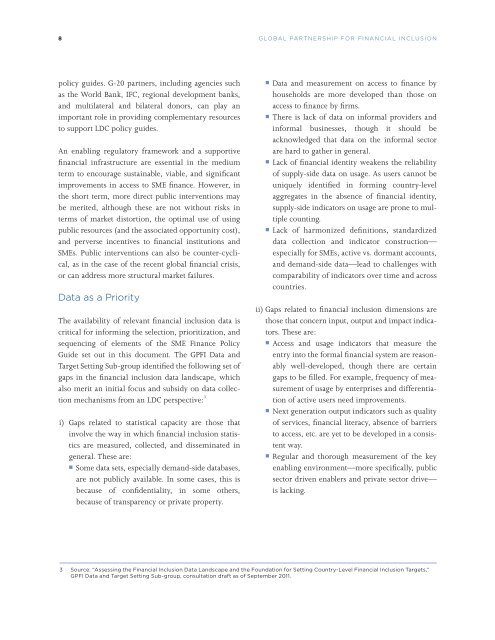
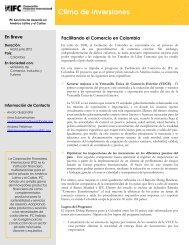
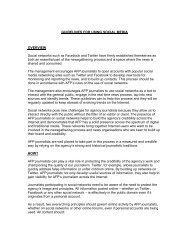
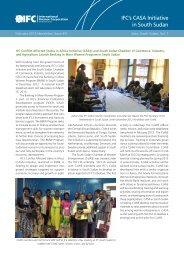

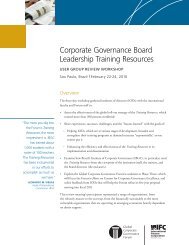




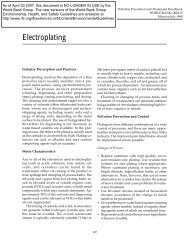

![Print a two-page fact sheet on this project [PDF] - IFC](https://img.yumpu.com/43449799/1/190x245/print-a-two-page-fact-sheet-on-this-project-pdf-ifc.jpg?quality=85)


